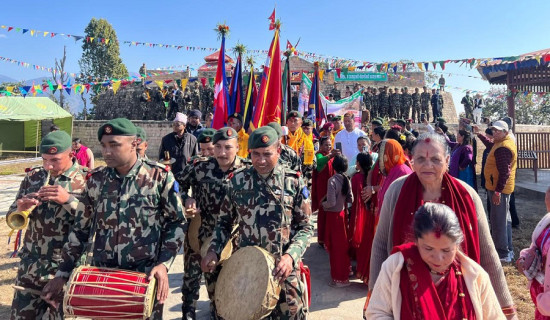- Thursday, 8 January 2026
Give Priority To Rural Development
During the Panchayat dispensation, a back-to-village national campaign was launched in 1967 AD. The aim of the campaign was to accelerate rural development because the majority of people were living in rural areas. Civil servants and students were sent to the rural areas, where they had to live and take part in development works. They also had to work as teachers and enlighten the rural people on the goals of the government. However, the campaign could not achieve its desired results. It lasted just eight years till 1975. The campaign was officially abolished in 1980. After a decade, the Panchayat system itself came to an end under the juggernaut of democratic forces.
After the reinstatement of democracy in the country, the constitutional monarchy was ushered in with multiple political parties emerging one after the other. During the reign of the CPN-UML, the government introduced a build-your-own-village campaign but it did not long last.
Migration
During the Panchayat period, migration from rural to urban areas and from hills and mountains to the Tarai was negligible. However, with the regime change in the 1990s, waves of migration took on great proportions. The waves swelled when the Maoist insurgency raged from 1996 to 2006. Such waves are continuing to this day. Now, Kathmandu is beset by myriads of problems. The resources available in the capital are overstretched. On the one hand, there are problems with basic needs such as drinking water and sanitation, while on the other, pollution is growing day by day. Still, the rate of migration to the capital city has not dwindled.
Most rural areas are now devoid of youths; only women, children and the elderly are staying back in the rural areas. The youth have migrated either to the city areas or to the Tarai, or flown to foreign countries for better opportunities. Are the rural people alone to blame for this situation? The government is equally to blame. It is the responsibility of the government to create development infrastructure in the rural areas. Transport, education, healthcare and other basic needs are lacking in the rural areas. For lack of transport facilities, the people have to walk for one or more days to reach home from the district headquarters. Hours have to be spent on fetching a pot of water. Schools are glaringly lacking; children have to be sent to schools in the district headquarters in the cities.
For the treatment of severe diseases, helicopters have to be chartered to reach hospital or the patients have to be carried to where there are hospitals. Pregnant women facing delivery problems being rescued by helicopter is common nowadays. Primary clinics available in the rural areas are not well-equipped. Sometimes, even common medicines like Cetamol are not available there. The rural people are living in hardship. They find it difficult to manage even two square meals a day. As such, there is malnutrition in the children. This is because although there are vast tracks of arable land, there is a shortage of manpower to cultivate them.
The government should think seriously about this issue. Those who have migrated to the cities or to foreign countries are unlikely to go back to their villages. The government cannot force them to return to their home districts. But what the government can do is allocate sufficient budgets for the rural areas and develop infrastructure such as roads, schools, healthcare facilities and industries, focusing on agriculture and allied activities. Agriculture, together with forestry, is the sector that provides raw materials for industries. The youths are attracted to vegetable farming, horticulture, poultry farming, animal husbandry and related activities. By engaging in such activities, they can earn enough. They can be provided with opportunities to earn on-farm and off-farm incomes. Off-farm incomes are incomes from sources other than agriculture and allied activities. During the off-season, the people can engage in other activities to earn extra income.
Small-scale industries can be operated in the rural areas. The raw materials needed for such industries can be supplied from agricultural and forest sources. At a time when the rural areas are suffering from food shortages, the development of agriculture and industry can solve food insecurity. Even though more than enough agricultural products are produced, they cannot reach markets for lack of transport facilities. That is why, roads are essential to carry agricultural products and fruit to the cities. It is not a good thing to import vegetables and fruit from India and other countries at the cost of domestic products.
Agricultural roads
Road-building in the country is a slow process. It takes years for roads to be built or upgraded. The Narayangadh-Butwal road is a case in point. It is usual for deadlines for the completion of road construction, expansion or upgrade to be extended time and time again. The government should prioritise the construction of rural and agricultural roads. The construction of such roads should be completed in time.
Migration created an additional burden on the cities. The rural people cannot be stopped from migrating to the cities or flying to foreign countries. They can, however, be encouraged to stay back in their villages by developing their areas. When the villages are developed, they will probably not seek to go out of their villages for better livelihoods. The environment in the rural areas is far better than in the city areas. The environment is pristine in a sense. So it is up to the government to develop the rural areas and encourage the people to live there.
(Maharjan has been regularly writing on contemporary issues for this daily since 2000.)
















